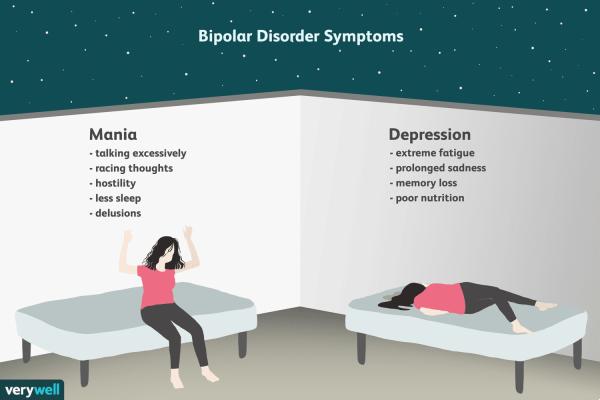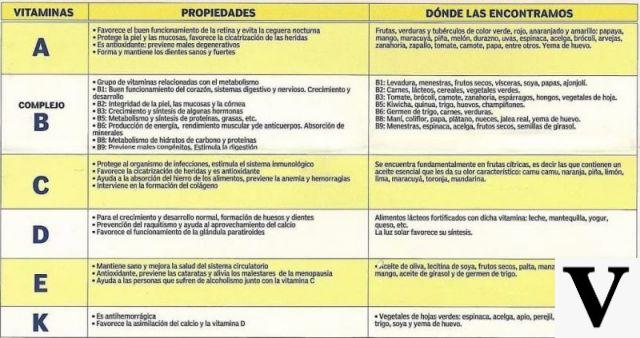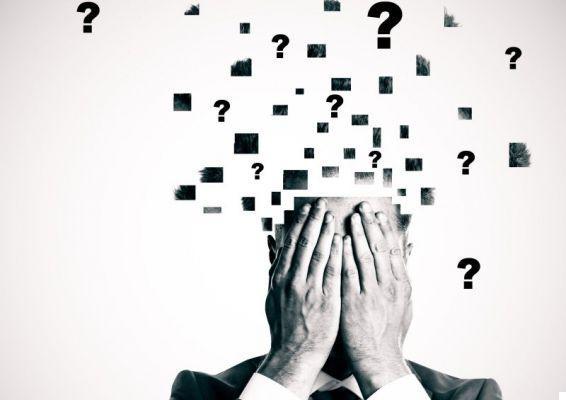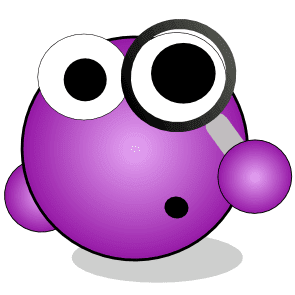
Mixed episode
The diagnosis of mixed episode predicts that for a period of at least one week, almost every day, both the criteria for the manic episode and those for the major depressive episode are met. There are rapid and abnormal mood swings (from sadness to irritability, euphoria) and often agitation, insomnia and ideation to suicide, with impaired social and work functioning. The mixed episode is therefore characterized by the concomitance and rapid alternation of depressive and manic symptoms and frequently involves the need for hospitalization.
The patient abruptly passes from depression to euphoria or, at the same time, may present symptoms such as irritability, aggression, hyperactivity, threats, thoughts of suicide or doom, with sudden fits of crying. All these manifestations are often accompanied by delusions of persecution or hypochondria. Mixed episodes may present in an attenuated way or be characterized by the complete symptomatology of one of the two polarities (depressive or manic) together with nuanced aspects of the opposite polarity, giving rise to various combinations.
Ipomaniacale episode
is characterized by an uninterrupted period of exaggeratedly and persistently elevated, expanded or irritable mood of at least 4 days, with the presence of at least 3 of the 7 symptoms identical to those of the manic episode with the exclusion of delusions and hallucinations:
- excessive self-esteem or delusions of grandeur;
- reduced need for sleep;
- more talkative than usual or push to keep talking;
- flight of ideas;
- distractibility;
- increased involvement in purposeful activities or psychomotor agitation;
- excessive involvement in recreational activities with a high potential for harmful consequences (excessive shopping, unseemly sexuality, rash investments).
The subject in hypomanic state appears particularly cheerful, reports subjective well-being, proves decisive and operative, resistant to fatigue, with decreased need for sleep (which is limited to a few hours), gets up early feeling in good mental and physical condition and is eager to undertake many activities. The patient does not have a complete critical awareness of the disease and often tends to credit the current mood conditions as the usual ones for him. Furthermore, he is easily distracted, the course of his thought is accelerated and the contents of the same tend to superficiality and futility. However, irritability or touchiness can also easily appear in the face of the imposition of limits or containment actions exercised by the environment.
The clinical picture, with a rapid onset, lasts from a few weeks to a few months and, in 5-15% of cases, evolves towards a manic state of which it is revealed to be the attenuated precursor.
Bipolar disorder
For further information: Symptoms Bipolar disorder
Bipolar I Disorder
A single episode of mania or mixed is sufficient to diagnose bipolar I disorder. This also indicates that the individual is at risk of developing depressive episodes as well (if he has not already experienced them). Violent behavior, alcohol abuse, suicide, impaired job performance are often associated with this disorder.
Bipolar II disorder
This disorder includes patients who alternate major depressive episodes with one or more hypomanic episodes. However, there must never have been a manic or mixed episode in order to make a diagnosis. Symptoms cause significant distress, impairment in social, occupational, or other important areas of functioning.
For further information: Drugs for the Treatment of Bipolar Disorder
Cyclothymic disorder
For further information: Cyclothymic Disorder Symptoms
it is characterized by a continuous alternation, for a period of at least two years, of periods with depressive and hypomanic symptoms attenuated compared to those of the depressive and manic episodes. During this two-year period the patient has never been without the symptoms described for more than two months. Furthermore, a manic or mixed major depressive episode was never present during the first two years of the illness.
The symptomatology is characterized by a rapid passage from one phase to another (each lasting a few days) and consists of: increased or decreased sleep, isolation or uninhibited search for contact with others, poor speech or excessive talkativeness, crying without motive or hilarity, psycho-motor slowdown or frantic search for activity.
Mood swings usually occur suddenly and are short-lived.
In 15-50% of cases the disorder evolves towards a bipolar form of type I or II.
Summary table illustrating the difference between "unipolar" and bipolar depression
Other articles on 'Bipolar Disorder'
- Mania and manic episode
- Symptoms Depression
- Depressive disorders: major depressive episode
- Major depressive episode symptoms
- Dysthymic disorder
- Depression - Medicines to Treat Depression
- Antidepressants, drugs for depression
- Antidepressants
- Depression and St. John's wort
Mixed episode
The diagnosis of mixed episode predicts that for a period of at least one week, almost every day, both the criteria for the manic episode and those for the major depressive episode are met. There are rapid and abnormal mood swings (from sadness to irritability, euphoria) and often agitation, insomnia and ideation to suicide, with impaired social and work functioning. The mixed episode is therefore characterized by the concomitance and rapid alternation of depressive and manic symptoms and frequently involves the need for hospitalization.
The patient abruptly passes from depression to euphoria or, at the same time, may present symptoms such as irritability, aggression, hyperactivity, threats, thoughts of suicide or doom, with sudden fits of crying. All these manifestations are often accompanied by delusions of persecution or hypochondria. Mixed episodes may present in an attenuated way or be characterized by the complete symptomatology of one of the two polarities (depressive or manic) together with nuanced aspects of the opposite polarity, giving rise to various combinations.


























